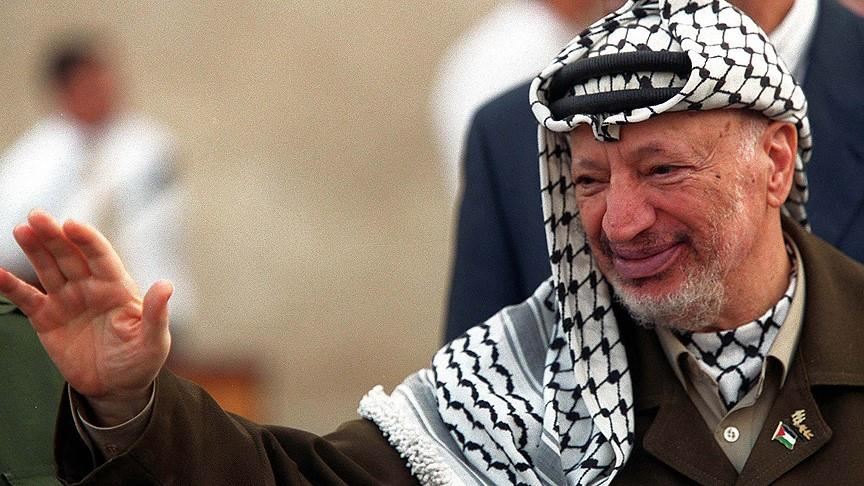
Who is Yasser Arafat? Childhood, Family
Yasser Arafat was a leader, a revolutionist and diplomat. He was the first president of the Palestinian National Authority. While some people believe that he was born in Cairo, he called himself a son of Jerusalem.
Yasser Arafat also known as Mohammed Yasser Abdel Rahman Abdel Raouf Arafat Al- Qudwa, was born on August 24, 1929 in Cairo Yasser’s father, Abdel al – Qudwa al- Husseini, was a famous textile merchant originally from Egypt in 1933, Yasser’s mother died of a kidney ailment His Father sent him and his younger brother to Jerusalem with their maternal uncle. In 1937, Arafat came back to Cairo.
School, College, Career
During his school days, Arafat used to spend most his holidays in Jerusalem. He developed a bond with the city. While living in Cairo, he would visit Jewish colonies against his father’s will. However, Arafat never stopped admiring Jewish religion and their customs. In 1994, Arafat entered the University of King Fuad I.
During his college days, he studied the works of Zionist scholars like Theodor Herzi. During this period, he also joined the Federation of Palestine and the Egyptian Union of Students. Later, he started his own magazine called the voice of Palestine.
As a President of Palestinian Central Union
In 1952, Arafat was elected as the president of the central Union of Palestinian Students, a position he held till 1956. In the same year, he completed his civil engineering degree.
Later that year, when the Suez Crisis erupted, he was part of the Egyptian army warring against Israel, United Kingdom and France.
For a brief period, he worked as a civil engineer in Egypt before shifting to Kuwait. In Kuwait, Arafat was employed in the department of public works.
Founder of New Palestinian, Fateh Movement, Israel
Later, he opened his own firm and kept contributing profits to the Palestinian cause. In 1958, Arafat found a new Palestinian national liberation movement called ‘Fateh’ around 1962, Arafat moved to Syria to recruit soldiers for an attack on Israel.
While the Arab countries were sitting up an umbrella organization called the Palestinian Liberal Organization, Arafat was busy setting up camps all along the Jordan-Israel border.
Finally, he carried out his first armed operation on December 31, 1964. After the attack, Arafat was known internationally. He was on the cover page of Times Magazine in the December 1968 issue.
Became Chairman of PLO, Independent Stat, 25, Country Supports
On February 4, 1969, he was elected as the chairman of the PLO (Palestine Liberation Organization). He had to work closely with other constitutes, like the popular Front for the Liberation of Palestine , and the Democratic Front for the Liberation of Palestine.
During 1987, the protest movement that continued for the next five years directed the world’s attention to the changed his policies and negotiated with the Israelis.
In December 1988, the PLO, under Arafat’s leadership, recognized UN General Assembly Resolution 181, a plan to partition British Palestine. Concurrently, Arafat announced the Palestine establishment of an independent Palestine state, and was declared the president of the new state. Later 25 countries extended their support to the government –in-exile.
Oslo Accord, Removed Five Year Settlement
In 1993, PLO Chairman Yasser Arafat and Israeli Prime Minister Rabin signed the famous Oslo Accord. According to the accord, Palestine self-rule was to be implemented in the Gaza strip and West Bank by removing Israeli settlements from the areas for a five year period.
Awards and Achievements, Death
As Arafat worked in the above –mentioned areas, his task became strenuous, especially after the assassination of Prime Minster Rabin. Yet, Arafat kept working for the people till his last breath. In 1994, for establishing peace in the Middle East, Arafat, Along with Yitzhak Rabin and Shimon Peres, received the Nobel Peace Prize.
Arafat died at the age of 75, on November 11, 2004, because of a massive hemorrhagic cerebrovascular accident. His body, wrapped in the Palestine flag, was sent to Cairo. He was buried in Ramallah in Cairo
